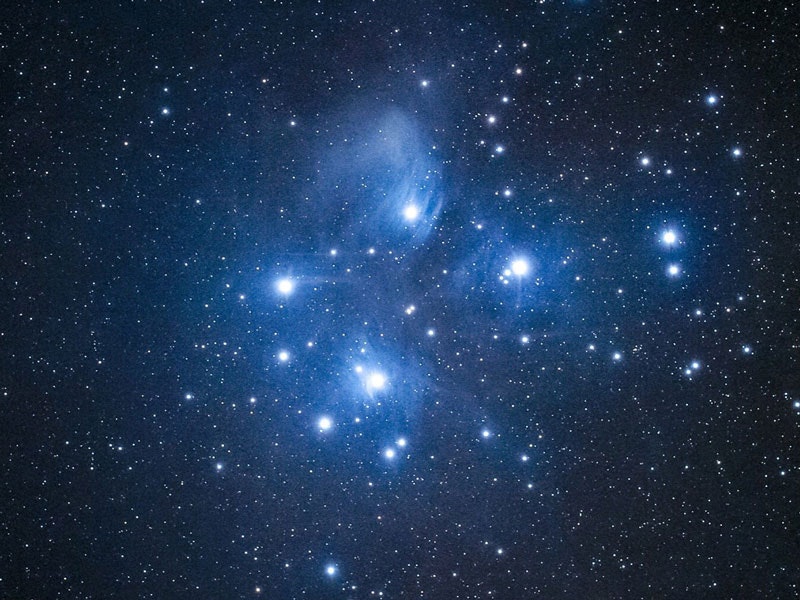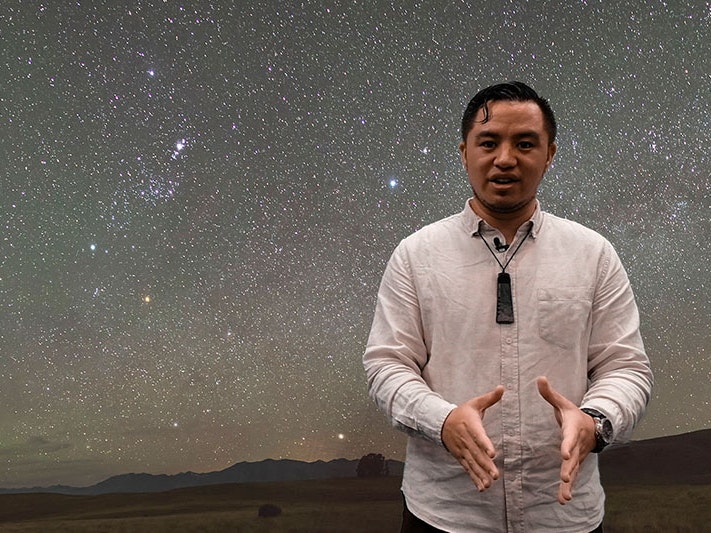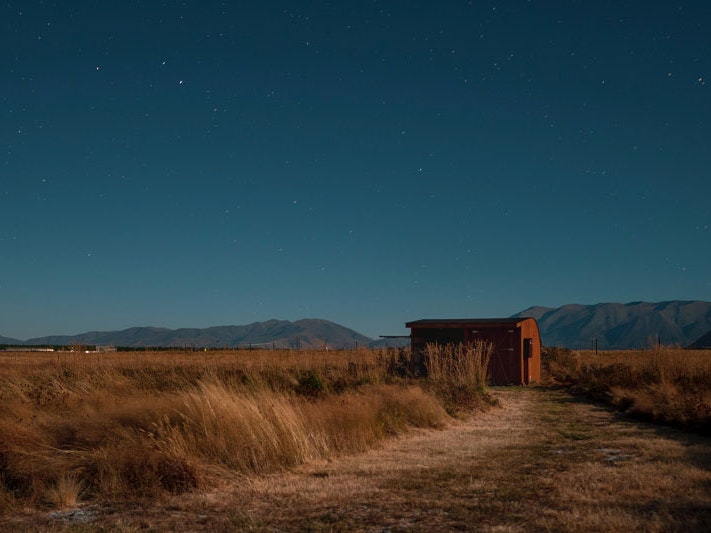
Matariki star facts
Get the facts about Matariki – a star cluster known worldwide and treasured in Aotearoa New Zealand.
Free museum entry for New Zealanders and people living in New Zealand
Open every day 10am-6pm
(except Christmas Day)
Free museum entry for New Zealanders and people living in New Zealand
Everything you need to know about the star and its cluster, when it rises, what it means, and how to pronounce it.
Mānawa maiea te putanga o Matariki
Mānawa maiea te ariki o te rangi
Mānawa maiea te mātahi o te tau
Hail the rise of Matariki
Hail the lord of the sky
Hail the New Year
Matariki is the star cluster most commonly known across the world as Pleiades. This cluster is part of a larger constellation of stars called Taurus. It is one of the earliest recorded groups of stars in human history, with a record that dates back some 17,000 years.
Around the world there are many names for this group of stars. In Japan, it is called Subaru, which means ‘to come together’. In China it is Mao, the hairy head of the white tiger, and in India it is known as Krittika. In Greek mythology they are known as the seven sisters, and in Norse mythology the Vikings knew them as Freyja’s hens.
For many cultures, these stars are connected to celebration, planting, harvesting, weather, and life. For Māori, the rising of Matariki signals te Mātahi o te Tau, the Māori New Year. The appearance of Matariki in the morning sky is a sign for people to gather, to honour the dead, celebrate the present, and plan for the future.
In 2022 Matariki became an official public holiday in Aotearoa New Zealand. Te Ture mō te Hararei Tūmatanui o te Kāhui o Matariki 2022 | Te Kāhui o Matariki Public Holiday Act 2022 came into effect in April 2022. It is the first public holiday in Aotearoa to recognise te ao Māori.
The Mānawatia a Matariki flag flies during the 2022 hautapu at Te Papa, 24 Jun 2022. Te Papa
Matariki sets on the western horizon in the evening around the beginning of winter during the lunar period of Takurua. It is at this time that Matariki disappears from view because of the light of the sun. About a month after it disappears, Matariki is seen again on the eastern horizon just before sunrise. Its reappearance coincides with mid-winter and marks the beginning of the Māori New Year. Many Māori communities would wait for the lunar period of Tangaroa to observe Matariki and to begin their celebrations.
Matariki happens during the coldest time of year. For the ancestors of Māori it was a time when the major work activities had come to an end: the harvest was over and food from the gardens had been gathered and stored away in pits and pātaka in preparation for winter. When the Matariki stars rose, it was a time to come together to farewell the dead, spend time with loved ones, share kai, stories, waiata, and celebrate the New Year.
Dates for the Matariki public holiday
Ma-ta-ri-ki.
Press the ▶ below to hear how you pronounce ‘Matariki’.
The well-known ethnologist Elsdon Best translated Matariki as ‘little eyes’ or ‘small eyes’ (mata = eye, riki = small). However, the name comes from the phrase ‘Ngā mata o te ariki Tāwhirimātea’, ‘the eyes of the god Tāwhirimātea’.
This name finds its origins in the separation of Ranginui and Papatūānuku. After Tāne separated the sky from the earth, Tāwhirimātea waged war against him and the other gods, for he wanted his parents to remain together. He battled with all of his brothers until he was defeated by Tūmatauenga, the Māori god of warfare and mankind. In a display of rage against his brothers and a sign of love for his father, Tāwhirimātea plucked out his eyes, crushed them in his hands, and threw them into the sky where they stuck to his father’s chest and became the stars of Matariki.
Matariki the name of the entire cluster as well as its brightest star (also known as Alcyone). Māori believe that this individual star is the mother of the other eight visible stars in the group, and she has a strong connection to health and well-being.

Get the facts about Matariki – a star cluster known worldwide and treasured in Aotearoa New Zealand.

Educator Hauiti Gardiner shows you how to find the Matariki star cluster during the Māori New Year, which falls in the month of Pipiri (June–July).

You’ve read our Matariki resources – now it’s time to test your knowledge!